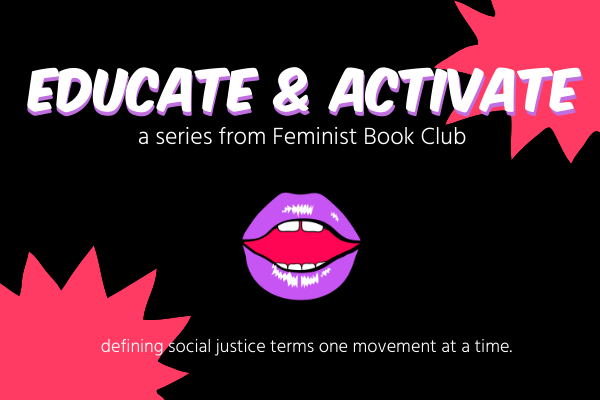Feminist Book Club blog contributors are working together to create posts as an “Educate & Activate” series. We will define a term or movement, provide historical context, and give you additional resources to learn more. We believe that an educated populace can be better activists, accomplices and co-conspirators. It is important to note that these are meant to be brief descriptions and not inclusive or exhaustive of all resources. We urge you to continue being curious, and continue learning more.
Definition
Ableism is a discrimination towards people with disabilities or illnesses. Ableism is often presented as social prejudice that those with disabilities are inferior to people without disabilities. Ableism can refer to both structures in place that disadvantage people with disabilities but also the words and actions against people with disabilities or illnesses. Ableism is the favoring of people who are not disabled and treating them as the standard of “normal.”
First Usage
Ableism has been present in society long before there was a term to label the oppression of people with disabilities. There are instances as early as the 1200s that depict people with disabilities or illnesses who were subject to torture and the denial of hospital care. In 1850 the eugenics movement began, which set precedent for actions and legislation against people with disabilities today because those with disabilities or illnesses were treated as less-than and were segregated from others to decrease reproduction.
History
Ableism dates back to the beginning of people, however, the term ableism is a newer term to describe social prejudice and the oppression of people with disabilities. In many countries around the world it was believed that people with disabilities or illnesses were possessed by or held magic that was feared by others. Many people believed that a person’s disability or illness was punishment from God for a wrongdoing by the person themself or their family. When science became involved, people began to understand how a person’s disability or illness may be linked to genetics and as a result, the eugenics movement began as a way to justify the mistreatment and segregation of these individuals. The eugenics movement believed in creating the “purest” lineage and justified segregating those with disabilities or illnesses as a way to decrease reproduction and the instances of disability in a population. Additionally, the institutionalization and sterilization of people with disabilities or illnesses was legal throughout the 1900’s until 1975 when institutionalization without consent was deemed illegal. The systems in place for people with disabilities or illnesses did not increase and there was a high demand for legislation that protects these individuals. In 1990 the American with Disabilities Act was deemed a federal law which guaranteed rights and resources for people with disabilities such as a right to accessible entrances to buildings, support for medical leave, or access to interpreters. With all of this in mind, it was not until 1993 when students with disabilities were legally allowed to attend school with their peers without disabilities.
Today, ableism is still present although it may not present itself in the obvious ways, such as a push for the segregation of people with disabilities or illnesses. Although the common thought of increasing accessibility is to add wheelchair ramps to buildings, accommodations for those with disabilities are much greater and should include those with invisible illnesses. Appropriate accommodations can look like access to interpreters, flexible work schedules, generous medical leave policies, and more. Ableism also shows up in the language that we use. An example of a word we should omit from our vocabulary when talking about people is “crazy” because it promotes an ableist foundation of what is “normal.” Ableism is especially prevalent in the fact that many people believe that for a person to be disabled it has to be visible. It is quite the opposite as a great deal of people who are disabled live with chronic illnesses that are invisible even though on the outside they may be perceived as “normal.” As a population, we need to redefine and dismantle what is seen as “normal,” because there are people who do not have access to the necessary resources and support that they need because they have to justify their disability. Additionally, it is important to recognize that it is not the responsibility of those who live with a disability or an illness to educate others about ableism and their personal experiences of navigating this world.
Resources for Further Education
- For a more detailed timeline of ableism, see The National Conference for Community Justice: Ableism
- To learn more about chronic and invisible illnesses, see Suffering the Silence
- For a firsthand account of living with a chronic illness, please read Autumn’s story
- To read a book about joy while living with a chronic illness, read Get a Life, Chloe Brown by Talia Hibbert
- For common examples of ableism today see Access Living a group that advocates for and ignites power in the disability community
- Anti-Ableism Advocates Seek Parity, Not Pity



Pingback: Organization Spotlight: Disability Visibility Project | Feminist Book Club